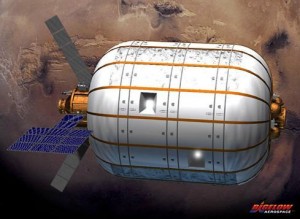Introduction
In six or maybe ten years the International Space Station (ISS) will come to the end of its operational life. To ensure that we can continue the permanent occupation of space that has been going on since 31 October 2000 we need to define what happens beyond ISS.
Given how long it takes to plan, fund and build a project the size of ISS, we believe it’s time to start the process to define a replacement now.
It’s our hope that this post can start a discussion in the community on the future after ISS and we would value any constructive feedback both positive and negative to this plan.
Planning for the future
The first thing we need to do as we look to the future is determine what are the goals for a replacement? Should it just provide the same facilities as we have today or should we look beyond that?
We believe we should look beyond just a direct replacement and consider the benefits that could be gained by having a multi-station architecture. With this in mind we are proposing that at least three stations be build. Two of these would be smaller single module stations, one placed at Lagrange Point 2 and the other placed in orbit around the moon. The three stations would provide different working environments.
In order to provide for each of these different stations we would need to work closely with one or more of the companies that are currently planning to mine asteroids, water would be the primary resource that would need to be supplied, other resources would be provided based on need.
This approach would also require that crew providers have the ability to send people beyond LEO and return them at the end of the mission.
Primary LEO Station
For the direct replacement we have opted to utilize commercial platforms (planned or existing) rather than spend money developing our own system. Where a commercial option isn’t currently available we will discuss plans for these and seeing if a commercial option could be adapted to meet the needs. This would be the first station that is built so that we can continue our permanent occupation of space.
Requirements
- Standard crew size of 6-12 people.
- Temporary crew size up to 18 people.
- Minimum of three crew vehicles at same time.
- Minimum of two cargo vehicles as same time.
- Airlock to allow Spacewalks
- Pressurized and Unpressurized experiments
- Standard docking interfaces
- Robot Arm that can reach any part of the station

The only commercial option currently available to meet these needs are the Bigelow Aerospace modules currently under development. Bigelow are planning to launch at least one of their BA-330 modules in the 2017 time frame assuming that there is at least one Commercial Crew provider available to launch crew to the station. Each BA-330 module provides 330m3/11,654ft3 of space. In order to connect these module and provide access points for Cargo and Crew vehicles we will be using inter-connecting modules, these would provide the visiting vehicle docking locations, as well as providing at least one airlock. Each BA-330 module is self contained providing it’s own power needs, life support and hygiene facilities.
Based on this we are opting to use three BA-330 modules, this will provide more space than is currently available on the International Space Station, additional space will be available inside the connecting modules.
At least one of the interconnecting modules will be used to supplement the power generation facilities provided by the BA-330 modules. Additional life support systems will also be available as a backup to those provided by the BA-330.
Beyond LEO
Initially the stations that are placed beyond LEO would be single BA-330 modules and would support a crew of four. Due to the distance to the station additional storage would be needed to ensure the crew had an adequate supply of food, etc. The stations would be upgraded over time based on demand including the additional of more BA-330 modules or large depending what is available.
These platforms would only be viable if at least one Commercial Crew and Cargo provider could demonstrate the ability to delivery to these remote destinations.
Summary
As the ISS gets older it will require more significant maintenance to keep it in orbit, in addition Russia are now taking about detaching there modules from the station in 2024, if NASA were to keep the station in orbit after this they would need to replace at least the Zvezda module as this provides the propulsion needed to move the station if needed to avoid space debris. With this in mind we believe it makes more sense to fund the development of new commercial stations rather than creating modules for the ISS and have to deal with older components failing and having to be replaced too.
The views expressed in this article are my own, if you would like to join the discussion on this please comments below.
Leave a Reply